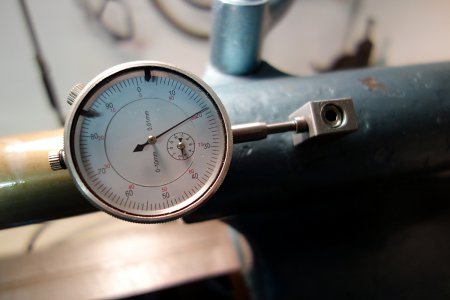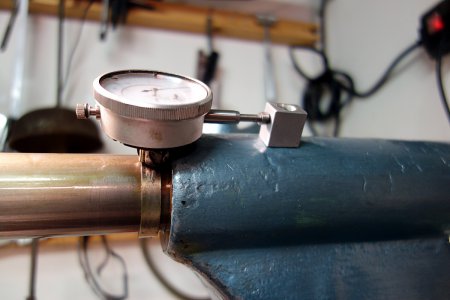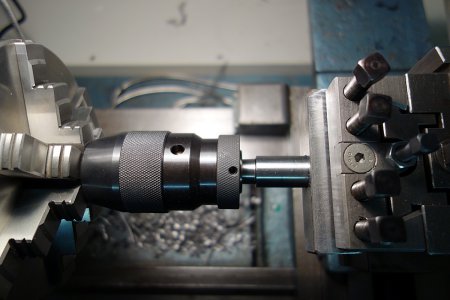- Joined
- Oct 9, 2014
- Messages
- 465
I was inspired by Mark F to make a tailstock travel indicator. This one is no near as nice as his, but it works fine and is easy to fabricate. It feels somewhat embarrassing to make an item based on his idea, but it is missed feature so it is how it is. The dial is mounted on a rigid tube clamp that can be locked anywhere on the quill. I only needed to drill and thread for the reference stop, which is made of T6 aluminium. The clamp and the dial locks with the same screw. It would be better to make a longer screw and have a 1 1/2" knurled dial on the end to eliminate the need for a tool to lock with.










